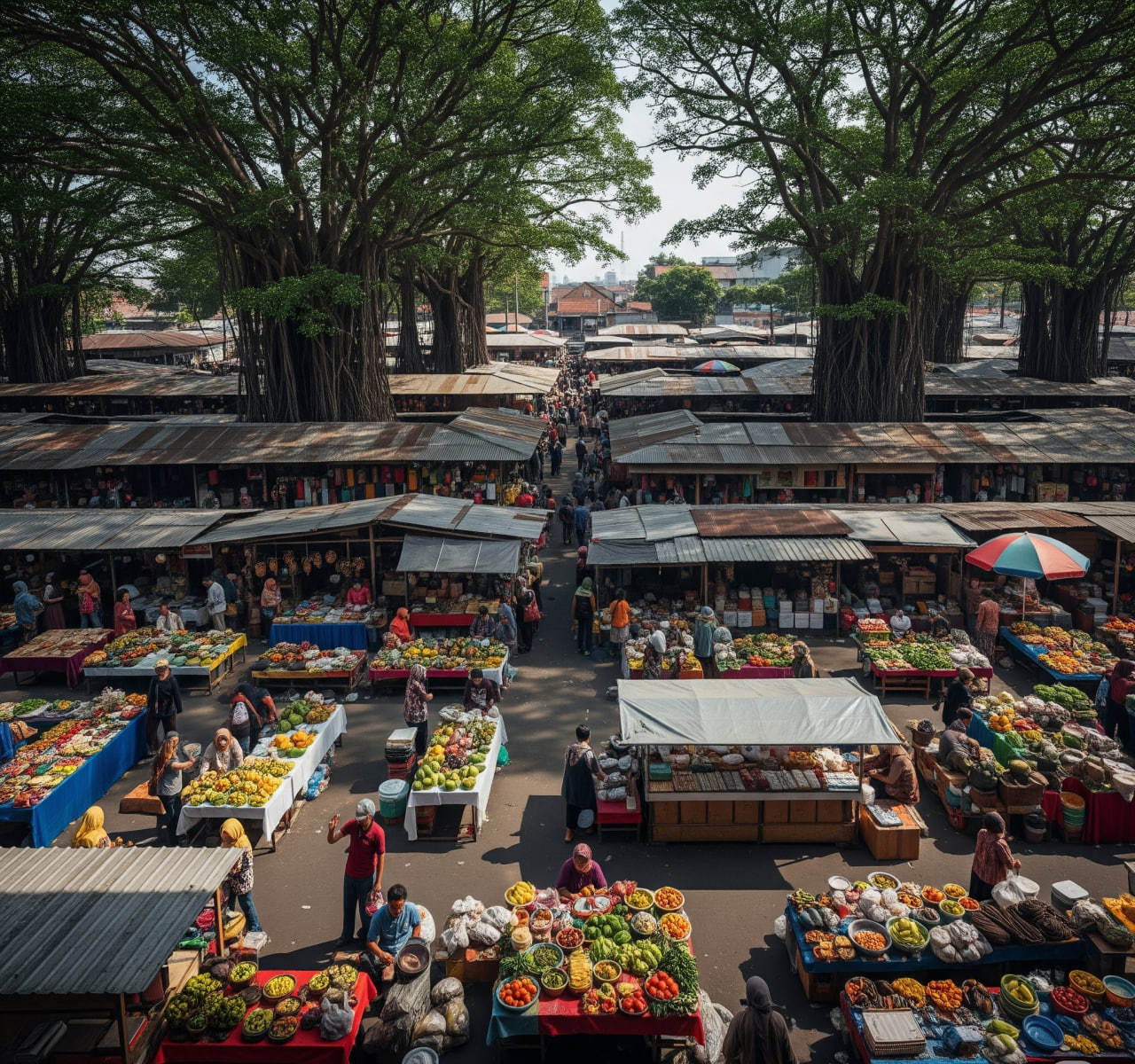News
From Banyan Forest to City Heartbeat: The Story of Pasar Beringharjo
If you've ever strolled along Malioboro and felt like your trip wasn't complete until you stopped by Pasar Beringharjo, you're definitely not alone. This market is like the pulse of Jogja—a place where economy, history, and culture all bustle in one crowded, chaotic harmony. But believe it or not, before the smell of spices and ocean of batik fabrics took over, this place was just a quiet banyan forest.
From Wilderness to Marketplace
The story starts back in 1758, when the Yogyakarta Sultanate was officially established. Just south of the newly built palace, there was a dense banyan forest. Locals began using the open space there for simple trade—because let’s be real, even royalty needs groceries.
At first, it wasn’t called Beringharjo. People just referred to it as “Pasar Gedhe” (the big market), because it was, well, big and getting busier. It wasn’t until March 24, 1929, under Sultan Hamengku Buwono VIII, that the name "Beringharjo" was officially given. “Bering” comes from “beringin” (banyan), and “harjo” means prosperity. A poetic name, rooted in hope—that this place would bring fortune and protection to the people of Jogja. Deep meaning, simple words.
Architecture, Batik, and All Things Iconic
What sets Pasar Beringharjo apart isn’t just its age, but its character. The building itself has a mix of Javanese and Dutch colonial architecture—elegant, but still humble. It was seriously developed in 1925 by a Dutch concrete company, and it shows: this market knew how to dress up from early on.
Inside, it’s a wonderland. From kitchen staples to handcrafted batik that could tempt even the thriftiest soul. Batik here isn't just fabric—it’s storytelling. You’ll find hand-drawn, stamped, and hybrid batik from all over Indonesia. And if you’re hungry? Just head downstairs. From traditional snacks to full-on meals, it's a culinary time capsule.
More Than a Place to Shop
Pasar Beringharjo is basically a time machine. Sure, you can buy stuff, but you’re also walking through history. It’s seen it all—from the days of the kingdom, through colonial occupation, into independence. It’s part of the royal city’s master plan—called Catur Gatra Tunggal—which unites the palace, mosque, town square, and market into a harmonious civic core.
Its strategic location at the southern end of Malioboro makes it a magnet for tourists and locals alike. You’ll see foreign visitors weaving through crowds of bargain-hunting aunties. There's a kind of magic in this place—maybe because it's not just a market, but a living, breathing piece of the city's soul.
What's Left of the Banyan Trees?
You probably won’t find any actual banyan trees here today. But their spirit lingers—in the sense of shelter, endurance, and the quiet presence of history. Pasar Beringharjo isn’t just about trade—it’s about how a place can connect the past with the present.
And above all: through all the changes, it’s still alive—buzzing, rooted, and always full of stories.



